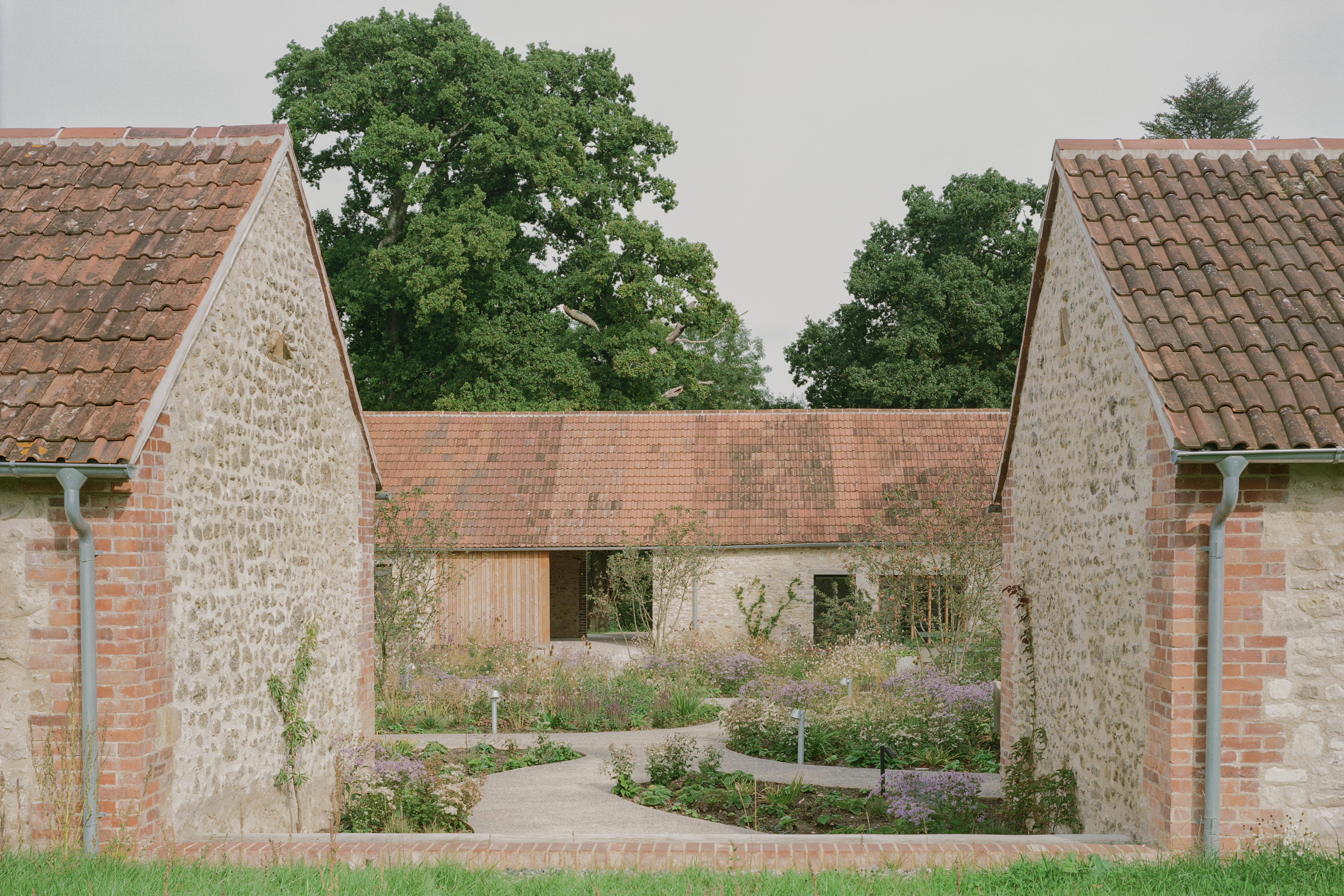A restoration and retrofit project, on an Area of Outstanding Natural Beauty in West Dorset, provides holiday accommodation and facilities specifically for people living with disabilities. The Wraxall Yard project used a JCT Standard Building Contract.
Wraxall Yard is a project developed by Clementine Blakemore Architects for client, Wraxall Yard CIC. It is a restoration and retrofit scheme which upgraded a site of derelict farm and agricultural buildings to provide bespoke, supported, self-catered holiday facilities for local people living with disabilities. The buildings are located on a 100ha organic farm in Lower Wraxall, an Area of Outstanding Natural Beauty in West Dorset, near Dorchester. In addition to the holiday accommodation, the upgrade includes a community space, workshop, and smallholding. The five holiday rentals are available to hire individually or as a complete site. The community space is for the hosting of free events. The site as a whole is run as a not-for-profit community interest company in partnership with a local charity, Green Island Trust.
In developing the scheme, the project team had several main objectives. At its foundation was the idea that opportunities to engage with farming and wildlife should be open to all, and that well-being and equality would be central to the project’s ethos. From this was the aim that the renovation would be an exemplar of accessibility and sustainability without compromising the historic agricultural character of the buildings and surroundings. Attention to detail and quality, using the existing location and materials as inspiration, was also important to ensure a level of finishing akin to what one would find in one’s home.
Early consultation with disabled people during the design process was vital to work out how best to accommodate their requirements. The result has been a ground-up approach to the retrofit, internally and externally, which avoids the usual ramps, handrails, and routes that would typically be fitted to a building retrospectively. The topography of the site is designed with pathways that give gently sloping access to the site. From the car park at the rear, the buildings are reached via a curved pathway that is surrounded by a coppiced nuttery, through a roofed passage through one of the barns, and finally a planted courtyard.
The accommodation has all been arranged on one level, with layouts that ensure easy circulation, spacious turning circles, and clear access to all windows and doors. Bedrooms all have height adjustable and profiling beds, finished to a high level, with bespoke solid Douglas fir surrounds that match the interior joinery and furniture. Bathrooms and kitchens are equipped with a range of accessibility features, such as sinks with integrated grab handles, and rise-and-fall worktops to enable the use of a wheelchair below.
The original buildings comprise a series of stone and brick dairy barns which date from the 19th century. Sitting adjacent to a Grade 1*-listed church, the barns are built around a central courtyard which extends to the south to form an open farm yard flanked by a steel Dutch barn. In completing the restoration works, the majority of the original external stone and masonry walls have been retained. They have been underpinned by 50 per cent Ground Granulated Blast-furnace Slag (GGBS) concrete – a more sustainable alternative to traditional cement – and repaired with a mixture of salvaged and locally sourced stone, including field flint, Portland, Purbeck, forest marble, and chalk. The courtyard walls, which were in particularly bad condition, were replaced with new timber framed walls and clad externally with recycled stones from around the site. Roofs have been reclad with red clay double Roman roof tiles, and they now include integrated access points for bats at a number of locations.
Internally, similar to the original external stone walls, many of the existing timber roof trusses have been repaired and retained. New ones, where required, have been made from UK-grown Douglas fir in a sawn finish. New roof sheathing has been created from birch plywood and left exposed as the internal ceiling finish. The insulation is installed above, which enables the full depth of the beams to be visible as a feature. Existing walls have been insulated internally with cork, which is applied directly to the stone walls with lime plaster. This methodology allows for moisture to move through the envelope. Existing openings have also been re-used as much as possible in conjunction with operable steel windows and doors, selected for their longevity and ease of use. The use of Douglas fir is continued with the installation of fixed timber windows. In place of the barn doors, large expanses of glazing have been used, which have been subdivided by timber mullions to filter out direct sunlight.
Peace, tranquility, privacy, and a connection to the surroundings are reflected all throughout the scheme, from its quiet, tasteful colour palette and material choice through to the shared courtyard garden. Guests are able to take part in farming activities and spend time with the animals. The community space includes its own kitchen where guests can take part in workshops and classes. The wheelchair accessible route to the riverbank from the courtyard garden grants access to an island picnic area providing further opportunities for enjoying the local wildlife in peace.
A project with a focus on attention to detail, careful consideration of requirements, a defined approach to quality, and a complex set of building processes can always look to the JCT Standard Building Contract to provide a set of terms that uphold the exemplary standards achieved by Wraxall Yard.
Wraxall Yard, project data:
Start: May 2020
Completion: April 2022
Contract: JCT Standard Building Contract
Site area: 4,600m² (approx.)
Gross internal floor area: 800m²
Client: Wraxall Yard CIC
Architect: Clementine Blakemore Architects
Main contractor: Stonewood Builders
Structural engineer: Structure Workshop
Services engineer: Ritchie+Daffin
Landscape designer: Hortus Collective
Below ground drainage designer: Genever & Partners
Quantity surveyor: Align Property Consultants
Accessibility consultant: Centre for Accessible Environments
Interior designer: Clementine Blakemore Architects
Identity and wayfinding: Smiths Studio
Image(s): Lorenzo Zandri

